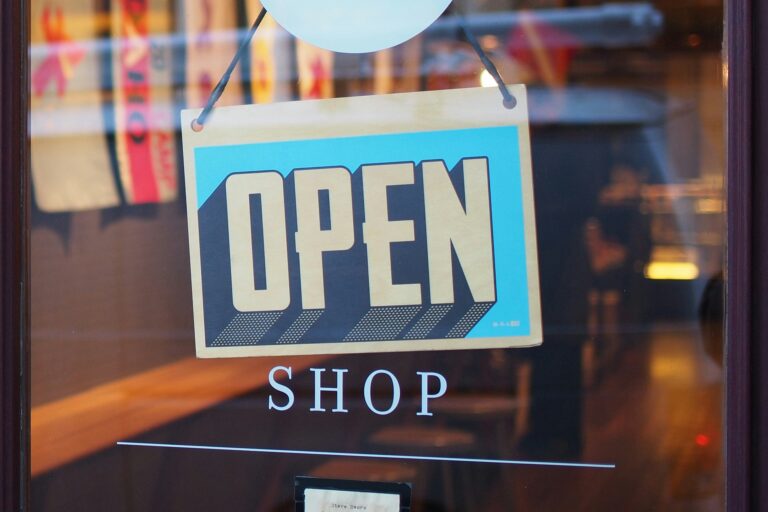The Ultimate Guide to Retail PR

Learn the basics of public relations for stores and online retailers and get proven strategies, tips, and ideas for retail PR campaigns.
Retail PR Mastery: Strategies for Building Your Brand
In a world full of competitive marketing strategies, it’s time for retailers to get creative. While many businesses focus on traditional marketing and advertising efforts, introducing a PR strategy to your retail business is key to organically enhancing your brand image and positioning your company as a trusted leader within your market.
Through effective PR campaigns, you can better influence what other people say about your business. You can create positive media attention that keeps old customers happy while bringing new customers through your doors.
Below, we’ll cover everything you need to know about retail PR, including:
-
- What Is Retail PR?
- Why Is PR Important for Retailers?
- Strategies, Tips, and Ideas for Retail PR
What Is Retail PR?
Retail PR is strategic communication that promotes positive buzz around a retail company or brand. Whether this comes from being featured in articles or promoting fun pop-up events, the goal of retail PR is to raise awareness and foster favorable feelings about your business.
While traditional marketing and advertising practices focus on relaying your business’s information to attract the right customers, retail public relations (retail PR) focuses on communicating what others say about your business.
Retail PR falls into two categories: proactive PR and reactive PR.
Proactive PR refers to sharing positive news about your business or managing public messaging after something negative has happened. Reactive PR refers to finding the best response when external events affect your company.
Successful retail PR campaigns make sure your brand’s messaging is consistent and creative, leaving people feeling positive about your business.
Why Is PR Important for Retailers?
Imagine you could elicit a specific feeling when people hear your company’s name. What would you hope customers would feel? Reliable PR strategies allow you to shape customer perceptions, giving your business a greater chance at long-term success.
Retail PR also helps position your company as a leader in your market, allowing you to get a leg up on the competition. By establishing credibility, customers are more likely to stay loyal to your company instead of jumping ship to a retailer that better aligns with their needs and values.
Additionally, PR strategies help you respond appropriately to negative publicity, minimizing damage and maintaining your hard-earned reputation if the waters get rough.
Here are some key advantages to retail PR:
-
- Credibility is Key. A solid retail PR strategy builds trust between you and your clientele. Customers who know your company is credible will favor you over the competition.
-
- Extend Your Reach. A successful PR campaign boosts brand awareness and extends your influence to new customers.
-
- Low Cost, High ROI. Public relations relies on free editorial coverage to spread brand awareness, saving you money in ad spend.
9 PR Strategies, Tips & Ideas for Retailers
Retail PR strategies can be the vital tool that makes or breaks your business. No pressure, right?
We understand that new strategies can be overwhelming, so we put together a list to help you find the best way to put these practices to the test. Here’s a comprehensive list of strategies, tips, and ideas to jumpstart your PR journey.
1. Get Clear on Your Goals
Before jumping into your PR campaign, make sure you are clear on your business-specific goals. Are you looking to enhance your company’s image, launch a new product, or connect with a larger audience on your social media channels? Defining clear, attainable goals provides a roadmap for your PR strategy, helping keep you on track. Without clear goals, PR efforts become scattered and ineffective. Before moving forward, ask yourself what a successful PR campaign would achieve for your business.
2. Identify your Audience
Once you have specific goals in mind, the next step is to get clear on your intended audience. Before trying to reach people, you must figure out who you hope to reach. Are you targeting new customers, fostering relationships with existing customers, seeking media attention, or addressing the general public? Know that each audience has unique needs that influence your messaging. Understanding your audience will help you pick the right platform for your PR campaign, whether it’s through social media, blogs, or in-store events.
3. Do your Research
Now that you’re clear on your target audience, conduct research before drafting your PR content. Keeping an eye on competitors will help you understand the nature of the current market, allowing you to come up with messaging relevant to your potential audience. Want to find a unique angle that gives you a leg up on the competition? Well-informed retail PR campaigns will set you up for the highest levels of success.
4. Nurture Media Relationships
Building and maintaining relationships with journalists, bloggers, and influencers within your market is the cornerstone of successful PR. Media professionals can boost your message, adding credibility and reach to your campaigns. Search for media contacts who cover your industry, then engage with them through social media or reach out to them with personalized pitches. By nurturing these relationships, you can get media coverage that impacts your company’s visibility and reputation.
5. Publish a Press Release
A press release is the foundation of any PR strategy. It’s your official statement to the media to announce what’s happening in your business, like new store openings, product launches, or company milestones. Coordinating a press release with relevant media sources can attract customer attention and build the credibility of your brand.
6. Get More Coverage
In addition to press releases, there are various other methods to share your story and maximize your coverage. For example, you can create blog posts that dive into company news, collaborate on targeted email campaigns to reach new and returning customers, and use social media to boost your messaging. It’s important to remember that each method holds its strengths. Social media creates real-time engagement, while blogs allow in-depth storytelling and SEO benefits. At Qwoted, we want to help you find the best way to tell your story. Connect with us today, and we’ll get you plugged in to our expert database so you can diversify your sources.
7. Collaborations
Turn your small business into a creative hub where influencers, local artists, and like-minded individuals can connect. Partnerships and collaborations can bring fresh perspectives and attract new audiences to your business. For example, inviting a local artist to create a mural in your store makes the space more aesthetically pleasing and creates an exciting photo-op that can attract new customers. Influencers who truly stand behind your business will increase your business’s trustworthiness with their followers. You can make creative messages that extend your company’s reach through innovative collaborations, driving foot and online traffic.
8. Tell Your Story
The story behind your business is a powerful way to connect with your customers personally. People are interested in how your company began, the hardships you overcame, and the values you maintain. Develop a story that captures your mission, vision, and what makes your company unique. Share your story on your website, social media, and blog posts. Add behind-the-scenes content, interviews with founders, and customer testimonials to develop your story further. By letting customers see the people and passion behind the business, you create a stronger emotional connection, compelling people to support and advocate for your business.
9. Get Involved
Connecting with the local community is one of the most powerful ways to leverage your PR strategy. Participate in local events, sponsor local programs, or partner with local charities to connect with and give back to the community. Share your community involvement on social media and your website to showcase your commitment to making a positive impact. Giving back to the community builds a strong, positive association with your brand that nurtures customer trust. This approach benefits your community and strengthens your business.
Conclusion
If you feel overwhelmed by today’s market, retail PR is the best way to build a positive brand image that sets your company up for success.
By adding retail PR strategies to your company’s tool belt, you can strengthen your place in the market, increase your credibility with customers, and get more bang for your buck in terms of return on investment.
Looking for a way to connect with PR professionals? Join Qwoted today, and let our network do the work for you!
POPULAR POSTS
LATEST ARTICLES
CATEGORIES
